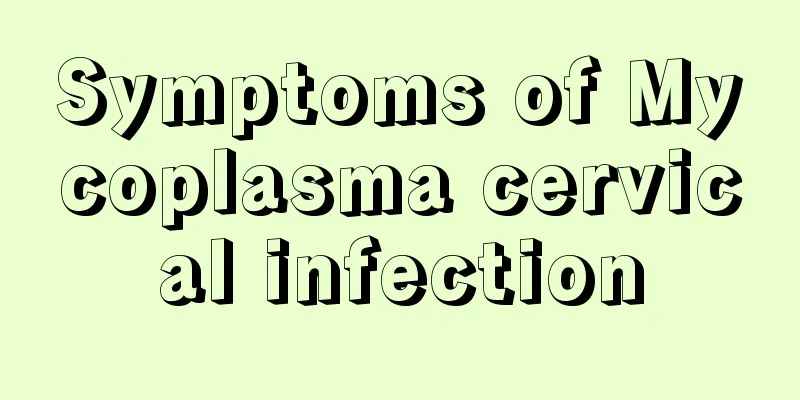What is the cause of bleeding 60 days after delivery?

|
It is normal for mothers to bleed after delivery. This is what we often call lochia. It is a good thing for mothers to eliminate lochia in time. So is bleeding 60 days after delivery also normal? At this time, we can't simply think that this is lochia. Perhaps the expectant mother's uterus is infected and inflamed. So what is the reason for bleeding 60 days after delivery? Let's take a look. Even if a mother does not have a caesarean section but gives birth naturally, she will still have "lower bleeding", but that may be the so-called "lochia": the fluid discharged from the vagina after delivery is called lochia, also known as birth fluid. The components of lochia include blood, mucus, necrotic decidual tissue and bacteria, and it has a fishy smell. The amount and composition of lochia will change depending on the time after delivery. Generally, within 3 to 7 days after delivery, the lochia is bloody, with a large amount of blood, bright red color, and contains a large amount of blood, mucus and necrotic decidual tissue, and has a bloody smell. Later, as the endometrium is repaired, the amount of bleeding gradually decreases and it becomes serous lochia with a smaller amount and lighter color. It contains less blood, a relatively increased cervical mucus, and necrotic decidual tissue, vaginal secretions and bacteria. It turns white or light yellow in about 2 to 4 weeks, forming white lochia, which is less in amount and no longer contains blood. It usually lasts for about 3 weeks before stopping. By observing the nature, odor, amount and duration of lochia, one can understand the recovery of the uterus and whether there is any infection. If the lochia is not clear one month after delivery, and is accompanied by a foul or putrid smell, or is accompanied by abdominal pain and fever, it may be an infection in the vagina, uterus, fallopian tubes, or ovaries; if the amount of lochia increases day by day, the color turns red and darker day by day, or blood clots appear, or there is uterine bleeding, vaginal trauma, or infection, etc., so that the lochia continues to be clear, it should be taken seriously and go to the hospital for examination and treatment in time to ensure the health of the mother after delivery. If the bleeding occurs around 60 days after delivery and is related to the fusion and detachment of the sutures of the perineal wound, it is recommended that you go to the hospital for treatment. 1. Perform a gynecological examination to understand the healing of vulvar wounds. 2. Perform B-ultrasound examination to check whether there are any residual blood clots in the uterine cavity. 3. Depending on whether you are breastfeeding or not, choose to observe or take medication. I believe that through the above introduction, expectant mothers have a certain understanding of the phenomenon of bleeding 60 days after delivery, and what to do about bleeding 60 days after delivery. Expectant mothers know that they must not cause bacterial infection and uterine inflammation for the sake of temporary convenience, otherwise they will suffer. |
<<: Treatment of cervical erosion with traditional Chinese medicine
>>: Causes of bleeding during the first intercourse after childbirth
Recommend
Warning signs of myocarditis
Science Fiction Network, December 29 (Xu Mingyang...
Bright red bleeding after sex
Women may experience excessive vaginal bleeding a...
How to reduce breast size and most effectively
Some people pursue a plump figure, but for slight...
Can Behcet's disease cause mucosal ulcers and eye inflammation? The hazards are more than that!
Author: Guo Yanqiu, deputy chief physician, Beiji...
Why do people hiccup? There are some tricks to stop hiccups
What is hiccups? I believe everyone has experienc...
Causes of recurrent fever due to mastitis
After the birth of the newborn, mothers let the b...
How should women maintain good health?
I believe that in her life, a woman has to go thr...
Why does leucorrhea feel like water?
Abnormal vaginal discharge includes changes in th...
Badminton is a "longevity sport", but it requires more of your body than you think! These 4 types of people are not recommended to play
In the playgrounds of the community and the open ...
Diagram of the location of acne on the genitals
The skin around a woman's vagina is relativel...
Why do I have pain in my thighs when I am five months pregnant?
Once women become pregnant, many changes will occ...
What causes lumps in women's breasts?
It is very common for female friends to feel lump...
The flesh above the cesarean section incision falls
Everyone should be familiar with cesarean section...
Kidney cancer is often discovered in the late stages. Is drug treatment effective?
Author: Shi Hongzhe, deputy chief physician, Canc...
Is it dangerous to have the umbilical cord around the neck during normal delivery? What should I pay attention to when the fetus has the umbilical cord around the neck?
Many mothers will find that their babies have the...









